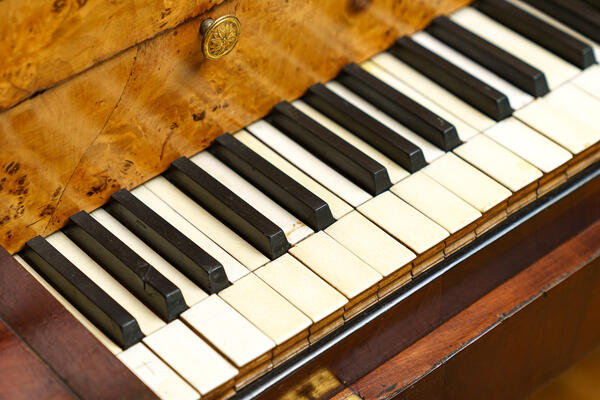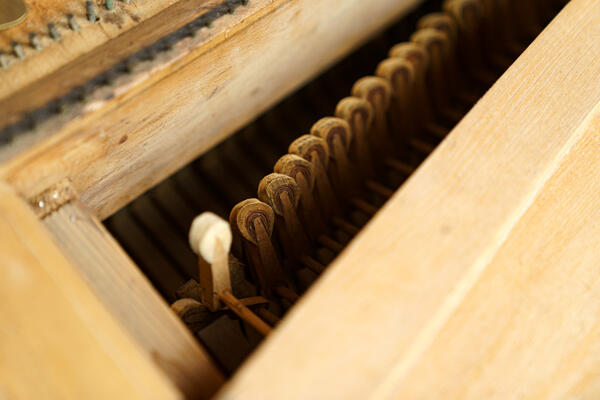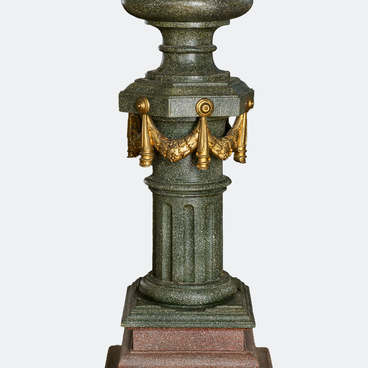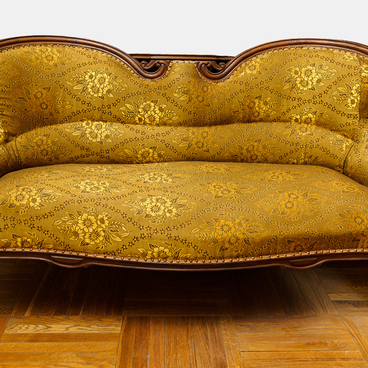The stringed keyboard musical instrument on display has a wooden case on four legs and is painted with mahogany lacquer. The movement is arranged horizontally. The case of the clavichord is rectangular, the vertical panels are not high, the upper panel is wide and flat, its front edge is a narrow, hinged cover with rounded corners. The front of the case has a keyboard recess, off-center to the left. The keyboard consists of 43 large white keys — wooden keys with white bone overlays — and 30 smaller black wooden keys. The front vertical panel above the keyboard consists of two narrow horizontal planks of light wood, with a bright textured design, decorated in the center with shaped overlays of golden metal with embossed decorative patterns. The upper overlay features a stylized lyre, wreath, torch and crossed trumpets. The lower one is made in the form of a round rosette with a branch descending under it with a flower at the end.
The clavichord is one of the predecessors of the
piano. It is a stringed keyboard instrument. It is unknown when the clavichord
was invented. The name “clavichord” is first mentioned in documents from 1396,
and the oldest surviving instrument was created in 1543 by Dominic of Pisa. It
is now in the Leipzig Museum of Musical Instruments. The compass of the
clavichord changed over time: initially it was two and a half octaves, from the
middle of the 16th century it extended to four octaves, and later it was equal
to five octaves. The range of the clavichord on display in the Krasnogvardeisk
Museum of Local Lore is more than six octaves. The clavichord has the quietest
sound of all keyboards, but it was considered one of the most expressive
keyboard instruments. The specific soft sound was only suitable for a private
home environment and a small number of listeners. The instrument’s quiet sound
accounted for its limited use almost exclusively as a home and practice
instrument. With the piano gaining popularity, the clavichord fell out of
fashion.





